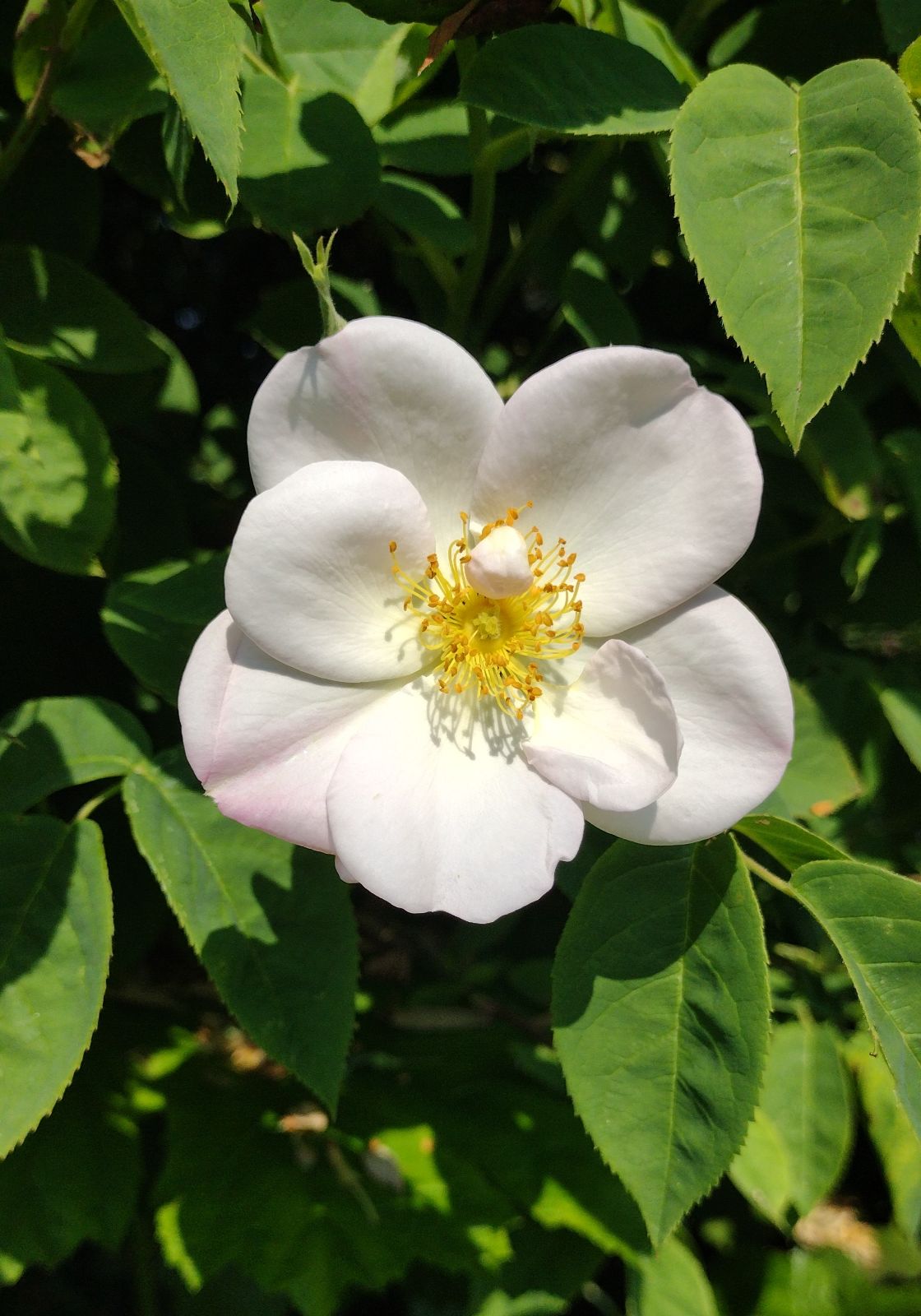Rosa 'Dupontii'
Credits
Article from Bean's Trees and Shrubs Hardy in the British Isles
Recommended citation
'Rosa 'Dupontii'' from the website Trees and Shrubs Online (treesandshrubsonline.
Genus
Synonyms
- R. dupontii Déségl., in part
- R. nivea Dupont, not DC.
- R. moschata var. nivea (Dupont) Lindl.
- R. damascena var. subalba Thory, in part
Infraspecifics
Other taxa in genus
- Rosa acicularis
- Rosa × alba
- Rosa albertii
- Rosa anemoniflora
- Rosa arkansana
- Rosa arvensis
- Rosa banksiae
- Rosa beggeriana
- Rosa biebersteinii
- Rosa blanda
- Rosa bracteata
- Rosa brunonii
- Rosa californica
- Rosa canina
- Rosa carolina
- Rosa centifolia
- Rosa cerasocarpa
- Rosa chinensis
- Rosa corymbulosa
- Rosa damascena
- Rosa davidii
- Rosa ecae
- Rosa eglanteria
- Rosa elegantula
- Rosa elymaitica
- Rosa fedtschenkoana
- Rosa filipes
- Rosa foetida
- Rosa foliolosa
- Rosa × fortuniana
- Rosa × francofurtana
- Rosa gallica
- Rosa gigantea
- Rosa glauca
- Rosa glutinosa
- Rosa gymnocarpa
- Rosa × harisonii
- Rosa helenae
- Rosa hemisphaerica
- Rosa × hibernica
- Rosa hugonis
- Rosa × involuta
- Rosa jundzillii
- Rosa laevigata
- Rosa longicuspis
- Rosa 'Macrantha'
- Rosa macrophylla
- Rosa majalis
- Rosa maximowicziana
- Rosa moyesii
- Rosa mulliganii
- Rosa multibracteata
- Rosa multiflora
- Rosa nitida
- Rosa nutkana
- Rosa palustris
- Rosa pendulina
- Rosa persica
- Rosa pimpinellifolia
- Rosa pisocarpa
- Rosa × polliniana
- Rosa prattii
- Rosa pulverulenta
- Rosa × reclinata
- Rosa × reversa
- Rosa × richardii
- Rosa roxburghii
- Rosa rubiginosa
- Rosa rubus
- Rosa rugosa
- Rosa sempervirens
- Rosa sericea
- Rosa setigera
- Rosa setipoda
- Rosa sicula
- Rosa soulieana
- Rosa stellata
- Rosa tomentosa
- Rosa villosa
- Rosa virginiana
- Rosa 'Watsoniana'
- Rosa webbiana
- Rosa wichuraiana
- Rosa willmottiae
- Rosa xanthina
This taxon is now considered to be a hybrid cultivar [JMG 2022].
A robust shrub of lax but not climbing habit, 6 to 8 ft high; branches unarmed, or bearing a few slender, short prickles. Leaflets usually five, sometimes three or seven, grey-green, ovate or oval, 11⁄2 to 3 in. long, downy beneath, finely toothed. Flowers very fragrant, light creamy pink at first, fading to almost white, 21⁄2 to 3 in. across, single, borne around midsummer in clusters or singly. Pedicels long, downy and glandular, like the rather narrowly ellipsoid receptacle. Sepals reflexed at flowering-time, glandular, with several lateral appendages. Styles united in an exserted column. Fruits ellipsoid, orange. Willmott, The Genus Rosa, Vol. I, p. 43, t.
This beautiful rose was named R. nivea by the Paris nurseryman Dupont (d. 1817), who created the famous collection in the Luxembourg garden. De Pronville, who sent the plant described by Lindley in 1825, stated that it had been raised from R. moschata, though by whom he did not say; the largest plant known to him grew in Cels’ nursery near Paris. The Belgian rhodologist Crépin was inclined to see in ‘Dupontii’ a variety of R. moschata (letter to Kew, 1888), but his later judgement was that it was a hybrid between that species and R. gallica. But a specimen sent by Kew to the Swiss authority Christ for naming was identified by him as R. damascena. ‘Dupontii’ is unlikely, in any event, to be the result of a direct cross between R. moschata and either R. gallica or R. damascena, so either de Pronville was wrong, or the seed-parent was itself a hybrid of R. moschata.
‘Dupontii’ is one of the least thorny of roses and one of the most beautiful. It received an Award of Merit in 1954.
Footnotes
Thory, in Redouté, gives R. nivea Hort. as one of several synonyms of his R. damascena var. subalba, but it is very improbable that the rose portrayed by Redouté under that name is the clone ‘Dupontii’ (Les Roses, Vol. I, p. 63, t.). Certainly the plant grown as R. damascena subalba in the Luxembourg garden in 1833 was not ‘Dupontii’, judging from the specimen in the Kew Herbarium. It seems that ‘Dupontii’ was also known as ‘Henriette’ or ‘Belle Henriette’.
The name R. dupontii Déségl. is founded partly on a rose found in a hedge in Maine-et-Loire, which was transported to the Angers Botanic Garden. This may have been a I spontaneous hybrid of R. arvensis or R. sempervirens.



